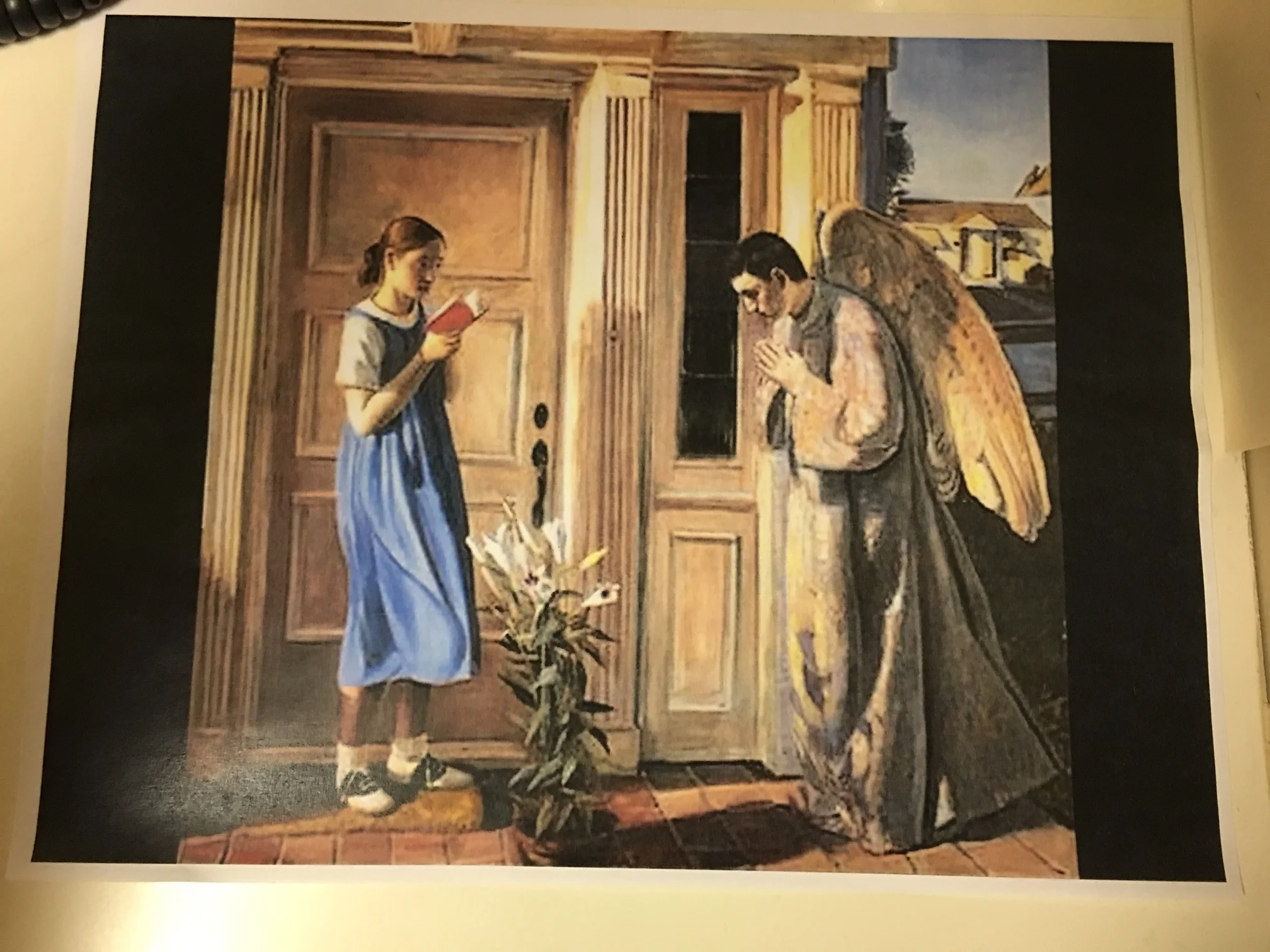Buechner: Lord's Prayer
“In the Episcopal order of worship, the priest sometimes introduces the Lord's Prayer with the words, ‘Now, as our Savior Christ hath taught us, we are bold to say..."’
Frederick Buechner, originally published in Whistling in the Dark from Frederick Buechner Center, Frederick Buechner Quote of the Day.
Annunciation by John Collier at St. Gabriel's Church, McKinney Texas
Buechner is reminding us of how bold we are to say perhaps the most recited Christian prayer. Of course, it is not really just a Christian prayer for it was written by a Jewish Rabbi telling other Jews how to pray. My experience is that whenever I visit the sick or homebound or those in need, no matter what their mental state, they say or show some awareness of the Lord’s Prayer. I have seen those who seem unresponsive, twitch or move a hand or mouth a word or have a change in cardiac rhythm or even begin praying when we close our prayers with this prayer. It is powerful and perhaps one of the last parts of our memory to leave us.
Buechner, however, is emphasizing the prayer’s boldness. If we could only find a little of what we are praying for in this prayer in our lives, the world would be dramatically changed, “turning our lives and our wills over to the care of God, ” as did Mary, as do those in 12-step programs pray daily, also asking for forgiveness, forgiving, asking to be delivered from evil, and so much more.
When spiritual friends ask how to find God, I have suggested for them to pray the Lord’s Prayer as a part of a rule of life at designated times during the day that work best for them until we meet again. I will do the same, and we can compare notes.
Joanna joannaseibert.com


